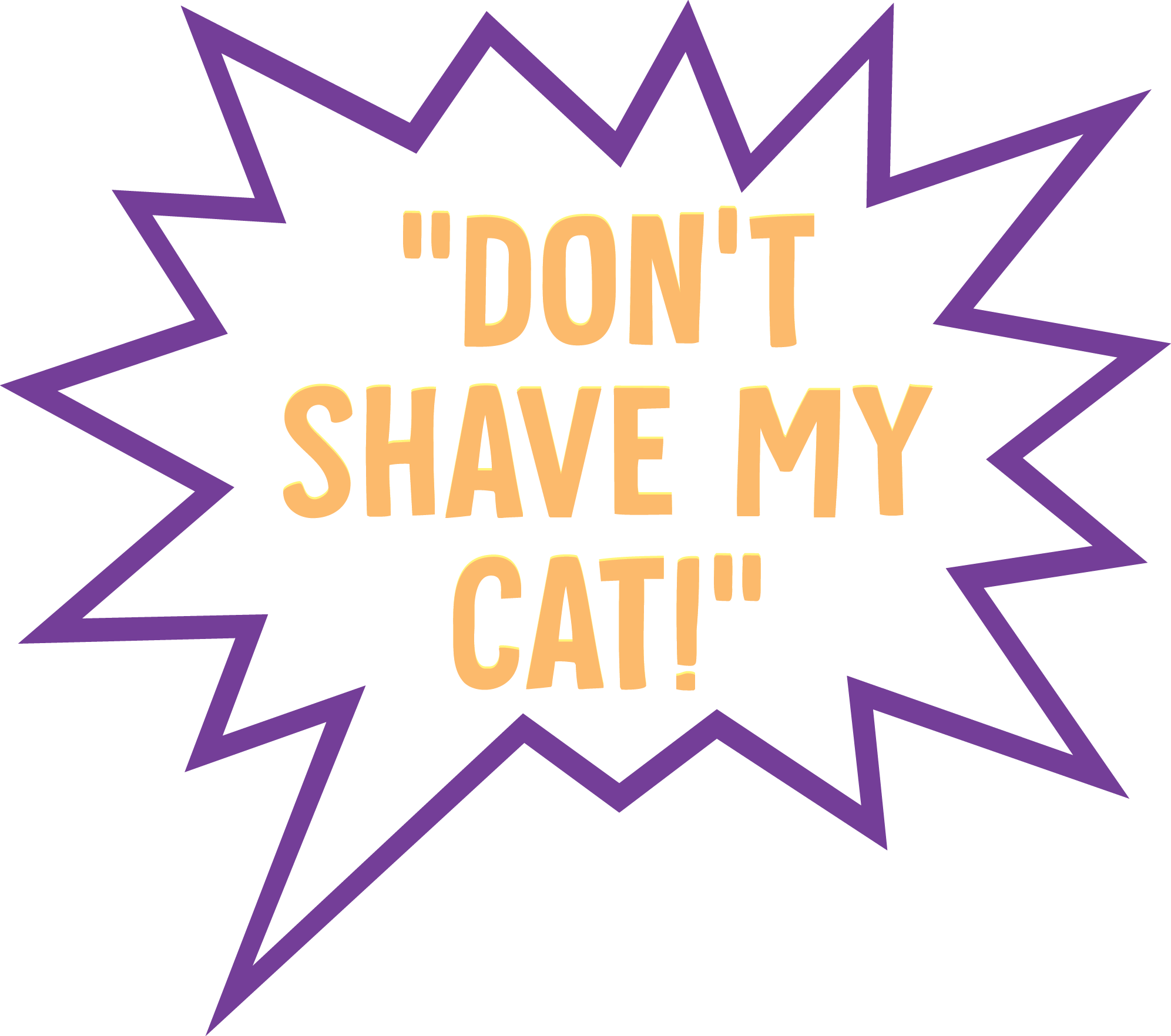
 s the days become longer and warmer, cat owners will begin to notice how much dead coat is around their homes and the clients you have trained to look for signs of shedding and matting will be calling you soon. In the weeks to come, the majority of your new cat clientele will change from having a few mats to pelted cats. This is the time of year experienced groomers refer to as “Lion-Cut Season.”
s the days become longer and warmer, cat owners will begin to notice how much dead coat is around their homes and the clients you have trained to look for signs of shedding and matting will be calling you soon. In the weeks to come, the majority of your new cat clientele will change from having a few mats to pelted cats. This is the time of year experienced groomers refer to as “Lion-Cut Season.”
To best help new clients with matted and pelted cats prevent future matting, you need to understand the process the family went through before they arrived with their pelted cat in front of you…
When the family realized their cat had mats, they probably tried to brush their cat for the first time in a very long time. This was likely more human interaction at a more focused level than the cat was used to, causing over stimulation. When the owner attempted to brush the cat, they were putting a new object (a brush or comb) against the cat’s body where the cat could not see the object. The cat did not know what the object was that was touching their body, and it was possibly causing pain. This most likely resulted in the cat acting in a way that was frustrating to the owners. To add to the difficult situation, the owner was most likely using the wrong tool which either pulled the cat’s coat with every pass or cut the coat, making the problem worse. Finally, the owner got frustrated and pinned down their cat in an attempt to cut out the mats.
This cycle usually repeated itself over weeks or months before the cat ended up in the pelted mess that has been placed in front of you for grooming. Now you, as a stranger, are going to attempt to resolve the problem that the cat’s family couldn’t solve. This is why both the family and the cat are leery of the process of a first groom.
If the client attempted to cut the mats out, I then talk about why this made matters worse. I start with the fact that the client did not get under the base of the mat when they cut the mat. Over time, not removing the base will result in a larger mat forming. I then give a simplified overview of the growth cycle of coat. Sticking to the fact that each hair follicle has a growing, resting and shedding stage is enough information to make my point, and is truly an educational experience for the owners. This is one way you can easily establish yourself as a professional during your initial interaction with a new client.
After we have covered why a mat forms and why when the owners cut the mat out the situation did not improve, I still have new clients insist I “just cut the mat out” or “just shave the mat and nothing else.” Many new clients of matted and pelted cats struggle to understand why a lion cut is the best option. After explaining why and how a mat forms, it usually helps with these requests.
Most of the time, owners of a matted or pelted cat have come in for grooming to get their cat’s coat fluffy again, so announcing you will shave all the coat off comes as a shock, and many people do not react well to the idea of a “naked” cat. Helping the owner understand that “brushing the mats out” would cause great pain, cutting the mats out would only make the problem worse in the long run, and only shaving the matted area would make their cat look like a crazy quilt begins to help them understand why a lion cut is the only option. This is the point where it really helps ease the client’s anxiety if you can present a written plan that explains how together, with regular maintenance grooming, you can get the cat back into the luxurious, full coat the family remembers the cat once having.
My written plan that I hand my clients is an educational journey over the next six to 12 months that includes six full grooming sessions with instructions on how to care for their cat so they never end up matted or pelted again. This helps relax the family and makes it easier for that family member to explain to the other members what is going on with their cat.
Keep in mind, sometimes the owners will continue to push for an option you know is not in the best interest of the cat. At that point, the only option will be to explain your stance on humanity verses vanity and possibly refuse the groom if the family cannot be gently persuaded into a lion cut.
Understanding how and why the cats ended up matted and pelted will help you better formulate the information you will present to the owners to convince them that a lion cut is the best option. And, being able to explain how and why a mat forms, why what they tried didn’t work, and how you plan to get their cat back into full coat will not only establish you as a grooming professional, but will also make the life of that cat more comfortable and enjoyable.
